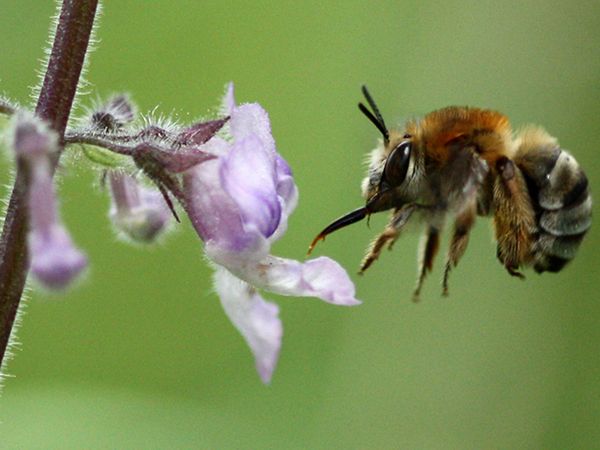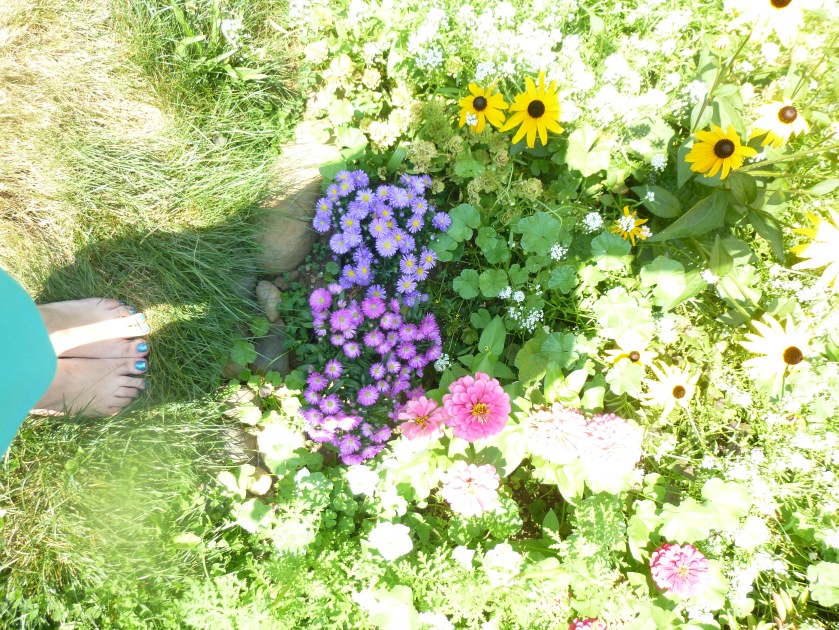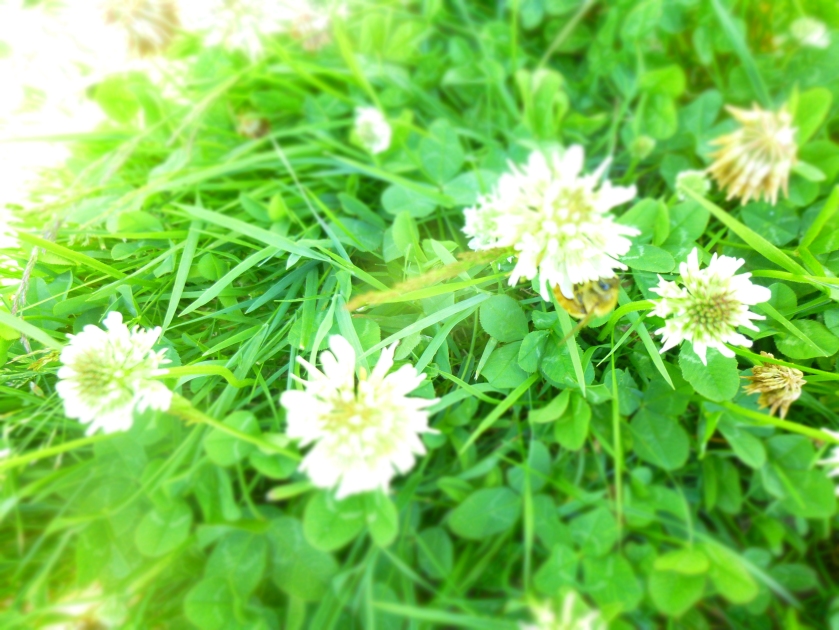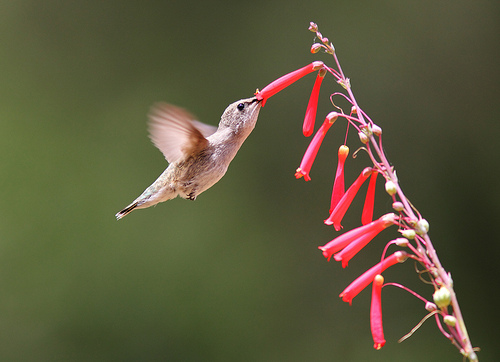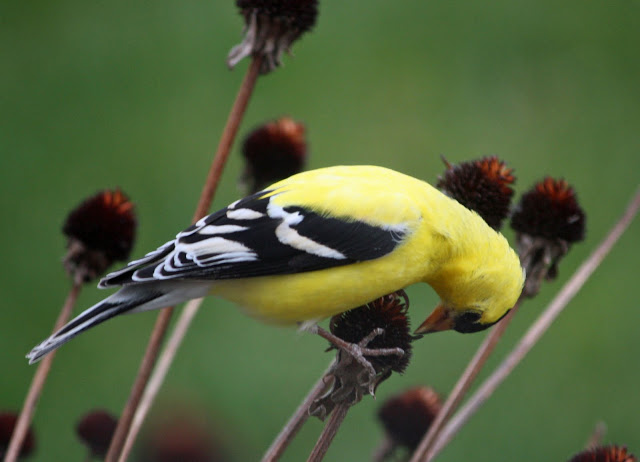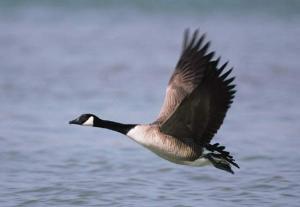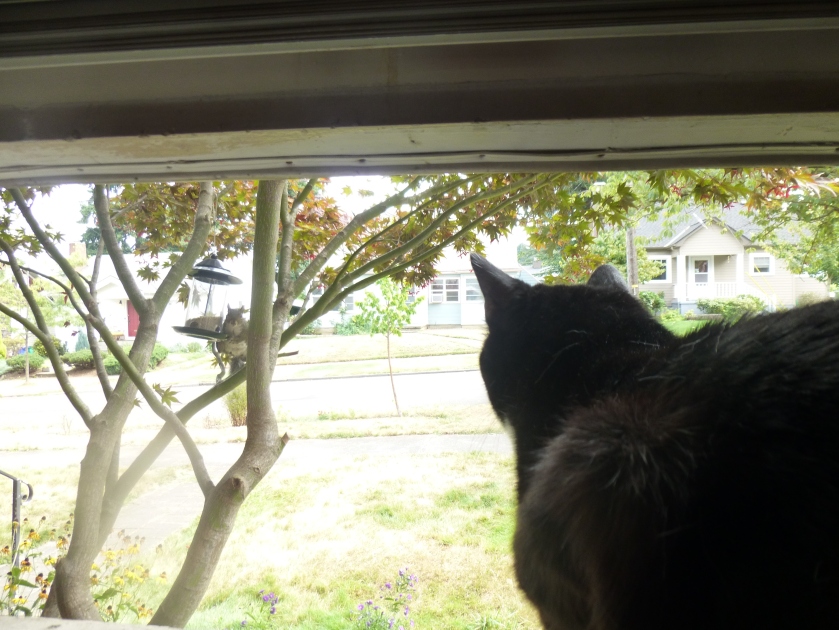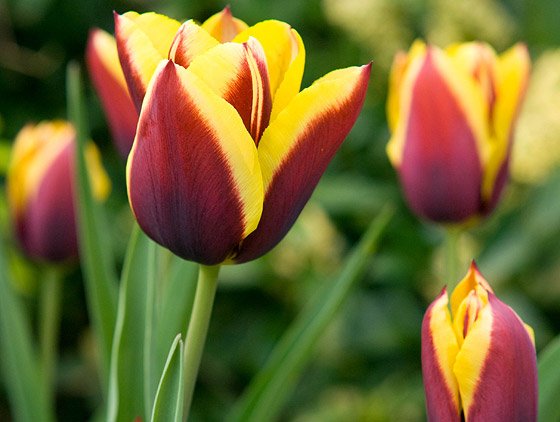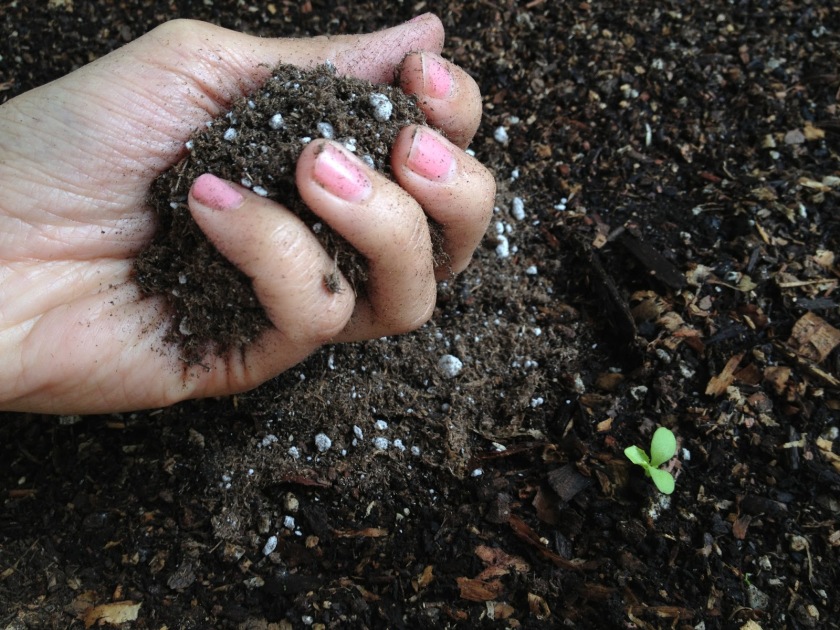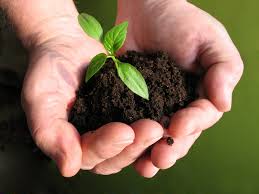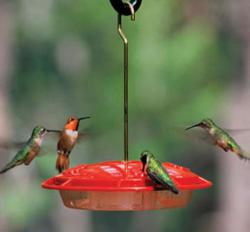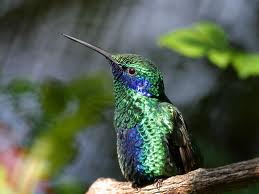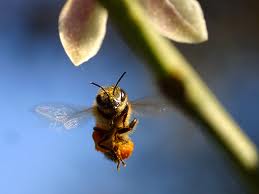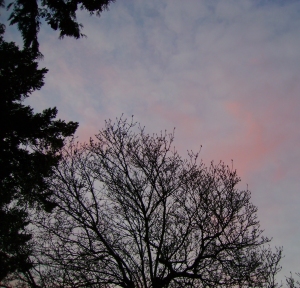My garden is my most beautiful masterpiece
We all engage in self talk. A running inner dialog that writes the script of our lives.
Seldom are we completely aware of just how influential we are on ourselves. We definitely live up to our own expectations. Positive or negative. Problems arise when insecure feelings begin to dominate the conversation. And rarely do we share these dark thoughts with others. They are hidden behind a wall of bravado we put up between each other. This causes us to see only the exaggerations put together by our imaginations not the full scope of reality.
Insecurities are kept in a secret place locked inside ourselves in that dark closet of pessimism, where fear lives. It is fear that leads us to lie to ourselves in the first place. Much of the negative crap that our own insecurities whisper to us is not accurate or realistic at all, but these hidden feelings do have a profound effect on our behavior. Only when we can forgive ourselves for not being perfect can we begin to rebuild and replace all that negative crap with good crap.
I liken a life to a garden. What grows in our garden is what has been planted.

The lives which we are living now are the result of our past actions and those past actions were the result of our past thoughts. The seeds we planted long ago are sprouting now.
We truly are what we have cultivated. We can thrive in a colorful vigorous and sunny garden or we can wallow in the dark. and it is that simple… of course surprises can spring up
Life is random and certainly not fair. We are subject to the whims of that randomness…
…and no matter what we do surprises can spring up…
Sometimes squirrels can dig up your tulip bulbs and plant them in your neighbors backyard…sometimes a spring hail shower can wreck havoc on your tender pansies. There have been times when a black cloud descended into my garden and left it cold and dark. There have been times when I thought that the sun would never shine again…
And then I found the sunshine within myself and lit up my garden with hope, faith and blind determination.

These are the times when we have to rely on that sort of sunshine to make our gardens grow.
…that’s why you need a good dose of it stored up in your pocket for a rainy day.
Determination: Yes. Work: Most certainly. Anything worth anything takes work and belief. That is your sunshine and nothing will shine without it.
Gratitude is like water. It nourishes life in our garden. It makes what grows grow. Without gratitude we will never find the happiness and contentment we seek.
Attitude. How we frame the picture we see.

What some may interpret as a raging storm can seem like a gentle shower watering a summer flower.
Seeds are the ideas we present to ourselves. We can plant what we want.

Being afraid; having social anxiety…the alien-ness I felt being on the autism spectrum…my alcoholism.. these were symptoms of a greater problem these were/are my challenges. I on instinct planted seeds to counteract the ones planted many years before which led me to feel so sad.
How do I do this? I change my inner dialogue. I forgave myself. I saw myself as a poor damaged thing that needed sympathy, love and understanding. I began to treat myself more kindly; I began to lie to myself but in a good, encouraging way.
I told myself wonderful things about me; things I didn’t believe. But I kept planting and counting.
I counted reasons to be grateful. I thanked God or the spirits that be. I thanked the universe for my good fortune. I embraced mindfulness and tried to enjoy every passing moment for what what it is without expectation. I found worthiness in contentment and strength in humbleness.

I wrote words like”optimistic” ,”happy”and “Yes” in bright colors and tapped them around the house.
I found solace in the colors of music and the sound of the rain.
I refused to be daunted by a reluctant sun so I made my own.

What began as a tiny spark has grown larger and my garden is growing with colorful, green, growing wild things.
I continue to plant seeds whenever I can. My garden is a work in progress. Always planting something, digging, weeding, taking it all in.
Despite changes and setbacks I am here to encourage other gardeners who may be discouraged. Maybe to make myself feel a bit better too.
As Ram Dass once said: We’re all just walking each other home.”
And I say that it’s damn good to have a friend to walk through the rain with.
~nlm

Related Articles
Antidepressant Microbes In Soil: How Dirt Makes You Happy
Mister Rogers Remixed | Garden of Your Mind



